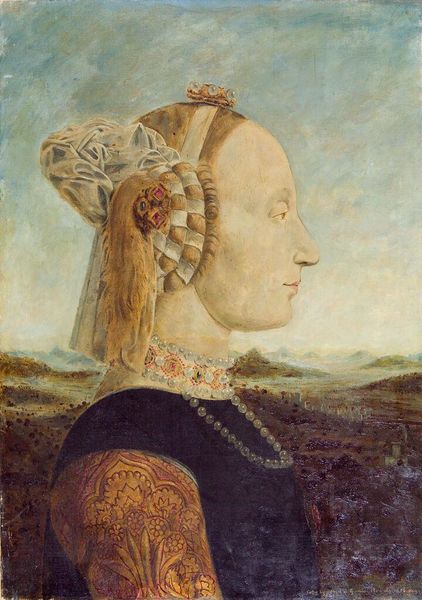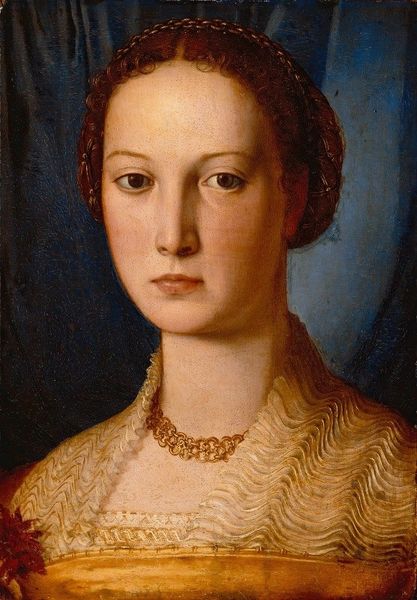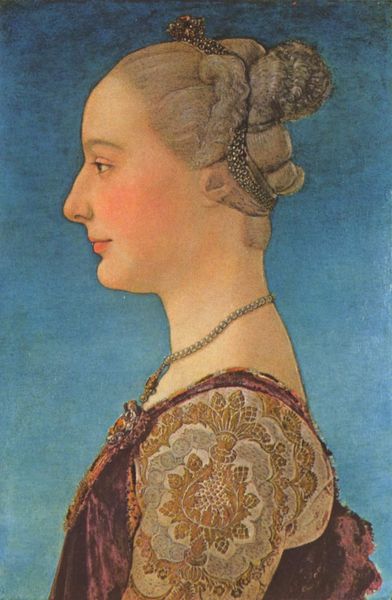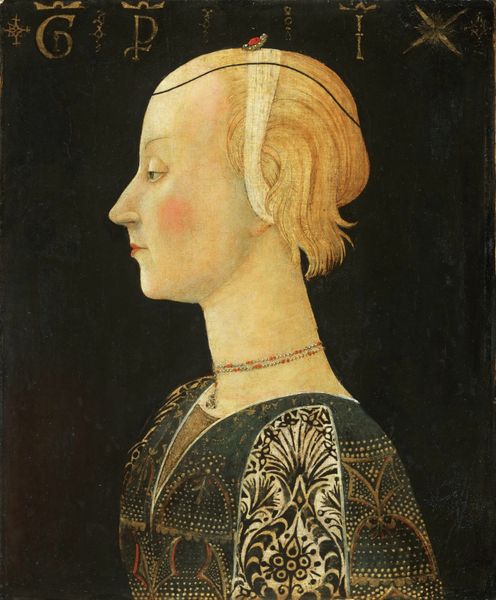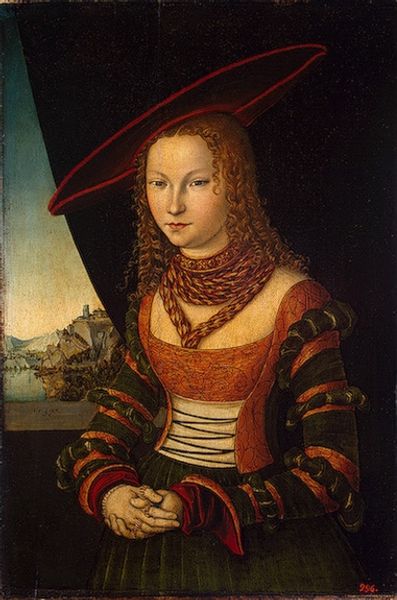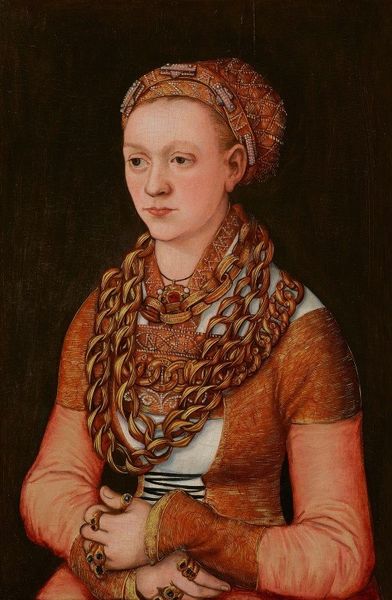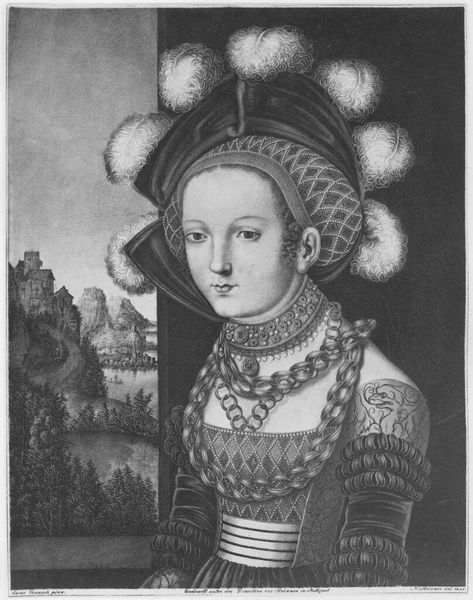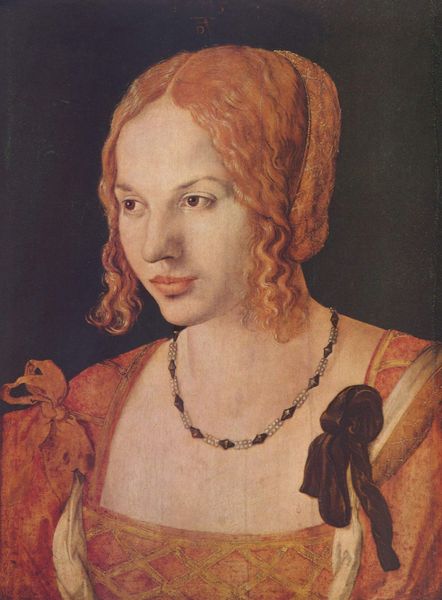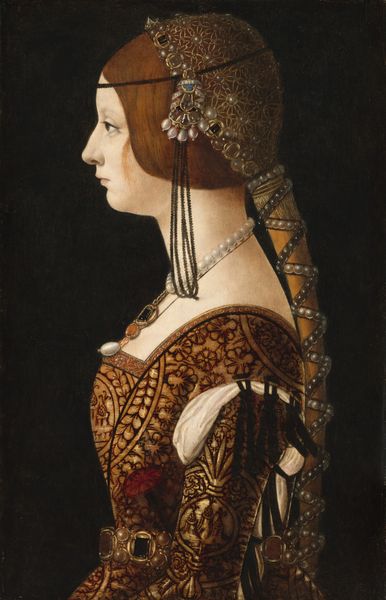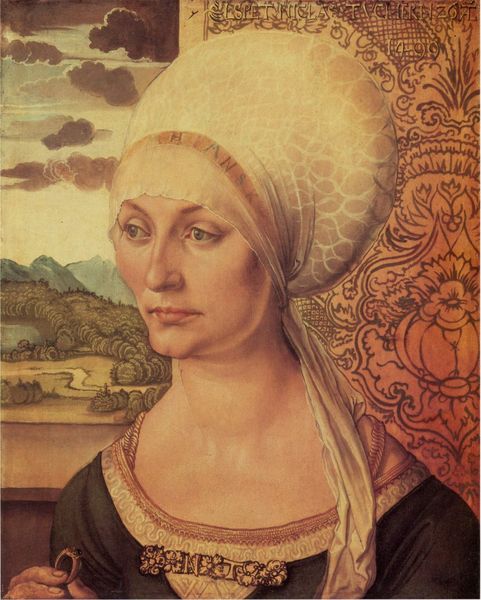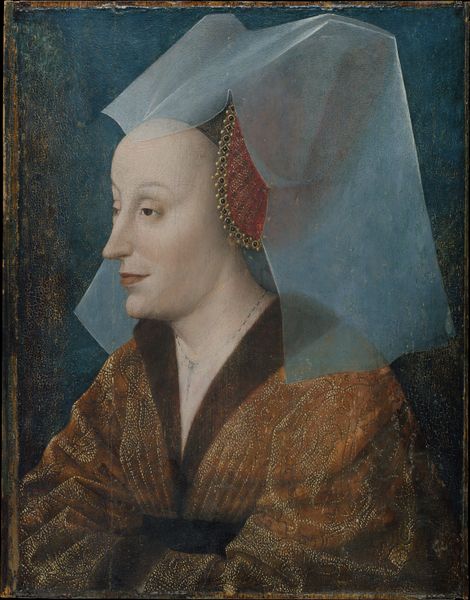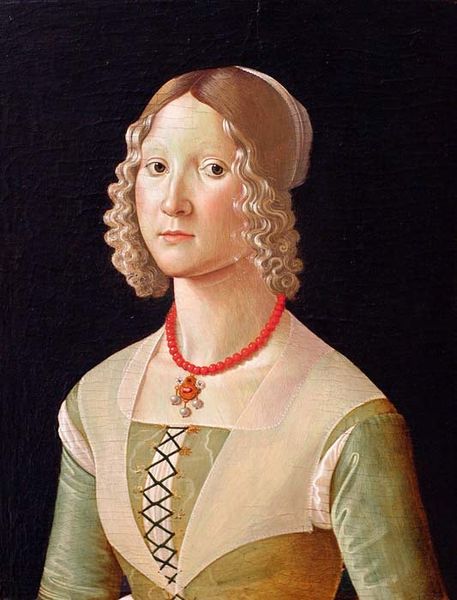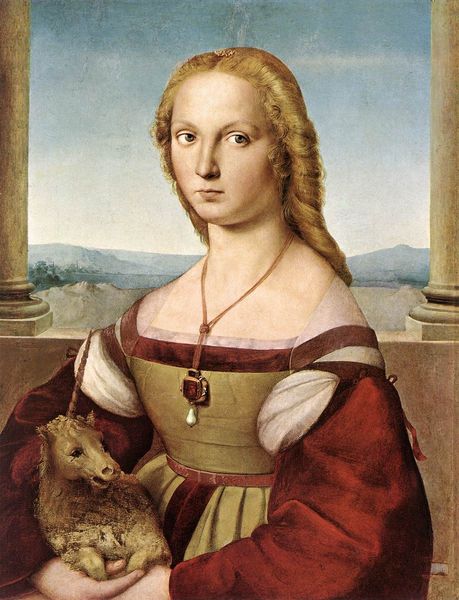
painting, oil-paint
#
portrait
#
painting
#
oil-paint
#
landscape
#
oil painting
#
classicism
#
history-painting
#
italian-renaissance
#
portrait art
#
miniature
#
realism
Dimensions: 46.9 x 33 cm
Copyright: Public domain
Curator: Standing before us is Piero della Francesca’s "Portrait of Battista Sforza," painted around 1465. It's currently housed here at the Uffizi Gallery in Florence. Editor: The immediate impression is one of serene detachment. She's a woman elevated, both literally and figuratively, against that incredibly vast landscape. Almost ethereally composed, don't you think? Curator: Absolutely. The artist, Piero della Francesca, masterfully captures the essence of Battista, Duchess of Urbino. The profile view itself is telling—common for Renaissance portraits, a nod to classical antiquity and often deployed when memorializing deceased subjects. Editor: You know, that very deliberate choice contributes to her image, almost flattening her into an emblem. This isn't necessarily a celebration of individual personality as much as it is one of social role, perhaps even dynastic importance? I wonder what psychological effect that artistic choice could have had on people? Curator: Indeed, the rigid profile and pale complexion have certainly fostered ongoing interpretations of her illness or fragility. Note the elaborate jewelry and costume; pearls, precious stones. These reinforce the ideal of feminine virtue and status, emblems of the Renaissance court and the classical influences it looked back to. Her forehead's prominent and so intentionally styled. What message do you think that sent to audiences of the time? Editor: The forehead elongation was a deliberate style and communicates a powerful idea. As the most important indicator of intellect, her elongated, high hairline amplifies that intellectual status—while, at the same time, her removed position elevates and almost alienates her. Power at arm’s length, maybe. We cannot reach her and therefore cannot really know her. It is power presented more as spectacle than human connection. Curator: The landscape beyond provides this visual narrative, underscoring dominion. Fields tilled and buildings structured suggest prosperity and order, extending the reach of Battista's influence. Oil paint, meticulously applied, gave depth but equally presents distance in a political landscape still navigating social mobility. What would you hope modern viewers consider as they engage with the work? Editor: That the presentation of self is invariably a negotiation—between aspiration and social constraints. That behind the serene façade of a Renaissance portrait lies both psychological depth and also astute social engineering. Curator: A poignant consideration in our image-saturated world, don’t you think? The art provides continuity, and we are continuously reflecting on its cultural role and purpose.
Comments
No comments
Be the first to comment and join the conversation on the ultimate creative platform.
